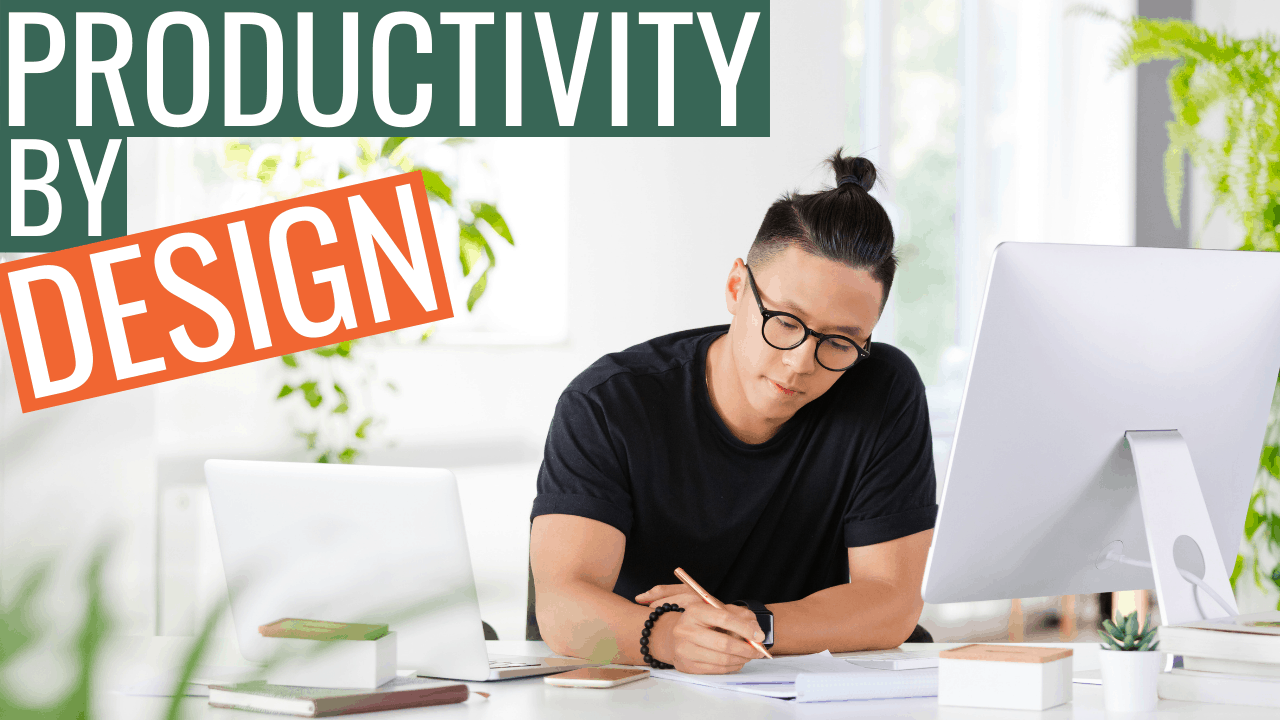The future of work is evolving and will continue to adjust as some businesses re-open and others continue their preparation to welcome employees back to the workplace. In the midst of a global pandemic, the open-plan office suddenly looks much more risky than revolutionary. The ability to network while hot-desking, learn by listening and brainstorm in the kitchen has turned from benefit to liability practically overnight. Today, employers have many considerations ranging from who should get priority access to the workplace, to the use of titanium door handles and infrared lights to kill off germs.
With a number of high-profile businesses already encouraging staff to work from home for the rest of the year, it’s tempting to hail the demise of the office. Yet, the latest data suggests that remote working is not for everyone. Research found that 71% of us are struggling to adjust to remote work, 65% say maintaining employee morale has been a challenge, and more than a third are facing difficulties with company culture. Employers cannot ignore these findings. Talent is the single greatest cost for most businesses and attracting and retaining the right people is challenging. Workplace environment, well-being, flexible working, brand image (including social justice credentials) are all increasingly important to employees.
“Design creates culture. Culture shapes values. Values determine the future.”
–Robert L. Peters
The Office is Dead. Long Live the Office!
Make no mistake, the office is here to stay. It will continue to play a big part in how work gets done. However, it will be different in both its physical configuration and the way it is used. For many, offices have increasingly become impersonal sterile places of obligation. The traditional office setting often doesn’t inspire occupants to become the best version of themselves. Say goodbye to the cookie-cutter workplace design that actually hurts your team’s productivity. With a little more intentionality in workspace design and organisation, we can help bring inspiration to our employees, our clients, and ourselves. More than that, we can create a work environment that stimulates rather than stifles. Designed right, future workplaces will blend the best of the office with the best of working from home so they become a destination for people looking to join a community of the inspired.
Put simply, office design is about creating a space that facilitates productive and purposeful work while leaving room for creativity, customisation, and personalisation. Essentially, you are setting a stage so everyone can bring their props. It’s probably not the first thing you think of, but design has a huge impact on guiding behaviour at work. You’re not consciously thinking about it every time you walk through the door, but the space you work in has a powerful effect on your performance and purpose.
“Design is not just what it looks like and feels like. Design is how it works.”
― Steve Jobs
Good design is obvious. Great design is transparent.
Physical workspaces have a powerful impact on a wide variety of factors, like health, morale, inclusion, creativity, collaboration, productivity, and purpose. Let’s focus on those last two:
Productivity – Poorly-designed workspaces can have a huge effect on work, with 46% of professionals indicating that their existing workspace heavily impacted their productivity. Level up your team’s productivity by improving their work environment.
Purpose – When we serve others, we become better. Purpose is an extremely powerful motivator, and you can encourage purpose through workspace design. Show employees they are cared for, their work is valued, and that they’re positively affecting the lives of others.
The less time you spend thinking about your work environment means you have more time spent on working and feeling fulfilled. Great office design decreases the mental load and facilitates focus. For a productive work environment, your office needs to have the right combination of spaces. One of the quickest ways to undercut productivity is forcing every office layout into the same configuration. Workplace design must be treated like a tool that is just as critical to your operations as your website or WiFi. Like a good software program, workplace layout must be informed by data. In this way, organisations can optimise their floor plans to support employee productivity. We no longer live in a world where an employee punches in at 8:00AM and works on the same task until 5:00PM. Over the course of an average day, a worker may alternate between six productivity modes. These can range from solo tasks such as reading, writing, and email, to collaborative ones like one-on-one meetings, group huddles, and brainstorming sessions.
“The Fibonacci Sequence turns out to be the key to understanding how nature designs… and is… a part of the same ubiquitous music of the spheres that builds harmony into atoms, molecules, crystals, shells, suns and galaxies and makes the Universe sing.”
― Guy Murchie
4 Often-Overlooked Productivity Essentials
This isn’t just about Feng Shui, it’s about producing results and getting things done. The most significant factor in determining an employee’s ability to focus is their physical environment. We are all naturally wired to respond to certain inputs. As you design a new space, work with the biological and social inclinations of your team, rather than going against the grain.
Lighting
The average office worker spends almost 1700 hours per year in front of a computer screen (6.5 hours a day). Not only is this damaging to the eyes (researchers found that fluorescent lighting may increase the incidence of eye disease by up to 12%) but being indoors beneath fluorescent lights for hours each day poses other health risks as well. In fact, a study conducted by Stony Brook University revealed that fluorescent lights emit dangerous rays that can damage the skin, and it is well-documented that poor lighting causes headaches and reduces productivity in workers.
In today’s high-tech world, we are often glued to some sort of screen – whether it be the computer, a tablet, or smartphone – which means on top of those hours spent beneath artificial lights, we are constantly looking at devices that emit blue light. Blue light only exists in nature when the sun is shining and we are paying the price with our health for going against the grain. Blue light at night throws the body’s biological clock – the circadian rhythm – out of whack. Sleep suffers. Worse, research shows that it contributes to the causation of cancer, diabetes, heart disease, and obesity. Blue light at night literally makes you fat. We are also spending less time outdoors during the day. The result? Not enough full-spectrum light. On top of that, most offices are overlit, wasting energy and producing glare that interferes with work.
Lighting is one of the most important factors in staying focused and feeling inspired to create, yet it’s one of the most overlooked and least invested in. Bad lighting can cause fatigue, eyestrain, headaches and overall irritability. Dark spaces can literally produce depression. The best example of full-spectrum light is sunlight, although it can vary depending on the time of day and conditions. All living things benefit greatly from full-spectrum light and it is a necessary component for the survival of people, animals, and plants. So how do you know if you and your staff are getting enough full-spectrum light? Essentially, not getting enough full-spectrum light results in a deficiency in Vitamin D which affects almost half of the global population. Employees are the most important part of any organisational success, but when they (or you) are subjected to insufficient lighting through their careers, the long-term effects can be life-altering and even life-threatening. So what can you do?
One of the most cost-effective ways to reduce the effects of office lighting is to change the lighting to full spectrum lighting. In a survey conducted by the Rensselaer Polytechnic Institute, they asked respondents to rate a number of factors related to full-spectrum lighting. The findings were remarkable:
- Improves colour perception
- Improves visual clarity
- Improves mood
- Improves productivity
- Improves mental awareness
- Improves retail sales
- Improves plant growth
- Improves results of light therapy in treating seasonal affective disorder (SAD)
- Improves results of light therapy for sleep disorders
- Improves scholastic performance of students
- Improves vitamin D synthesis in the body
Colour
The colour of our surroundings can change our moods and prompt different reactions from our bodies. Soft, muted colours have a different effect than hard, energetic ones. Natural colours like green and blue can improve efficiency and focus, while warmer colours can spur innovative thinking and intensity. Think about the kind of work that will be done in a space. Match that with the right colour, and line it up with your company brand.
Plants
We are biological creatures, first and foremost. We are deeply affected by our access to (or lack of) the natural world. It’s important for our psychological and physiological functioning, which directly affects our ability to be productive. Having plants in the office is a surprisingly potent way to improve workspaces. Plants reduce stress, clean the air, and even help to reduce noise levels. If you have office plants that are wilting or showing signs of ill health despite regular care, chances are they are not receiving enough sunlight. This is a great way to identify whether or not your office (and you and your staff) are receiving enough full-spectrum lighting.
Movement and Seating
You are probably already aware of the dangers of sitting for extended periods of time, so designing for movement around the office is key. Create a conducive workplace that fits your company culture. There’s a time to stay in one place and focus – you might opt for open seating, private offices, or a mix of nooks and crannies – but getting up and walking, bumping into colleagues around the office, and breathing some fresh air are all necessary for a healthy workspace. When designing an office, it’s your job to encourage behaviour without dictating it. That means creating spaces where people can bump into each other where they might not normally, on the way to the kitchen, meeting rooms, or even the bathroom. For example, you might want to keep water close to people and bathrooms far away. If you can manage it, give people more than one space to work from. Putting yourself in a new space with different qualities and things to look at quite literally shifts your brain and helps you stay focused.
“Clutter and confusion are failures of design, not attributes of information.”
― Edward R. Tufte
Interior and Spacial Design Matters
Every practical workplace strives to maximise productivity. Whole libraries of business books are devoted to the subject, but relatively few volumes deal with how productivity can be made – or destroyed – by interior design. On the surface, it seems that interior design concerns itself completely with aesthetics – the debate between natural and artificial lighting, the type of colours that would suit a particular kind of business, and the design distinction between a corner office and a hallway cubicle. However, the purpose to which interior design is dedicated is to enhance the quality of life and culture of the occupants. A good interior designer manipulates the components of interior design not simply to create an aesthetically attractive space, but one that creates a comfortable environment for productive work.
Science provides evidence of how interior design can affect employees in the workplace. Recently, scientists have begun to focus on how architecture and design can influence our moods, thoughts and health. They’ve discovered that everything – from the quality of a view to the height of a ceiling, from the wall colour to the furniture – “shapes how we think.” A University of British Columbia study showed how different background colours affected performance in several key mental tasks. Even as data shows how interior design delivers tangible benefits to productivity, organisations have been slow to capitalise on these findings.
Architectural and design firm Gensler conducted a Workplace Survey in 2006, and reported that nine out of ten respondents believed that workplace design affects their productivity. Employees estimated they would be about 21 percent more productive, given a better working environment, to the point of volunteering an extra hour per day if such a workplace was possible. Yet 46 percent of workers surveyed believed creating a productive workplace was not a priority at their office, with 40 percent admitting that minimised costs served as the main reason for their current workplace design. Overall, the survey found that poor workplace design may cost US businesses an estimated $330 billion in lost productivity every year.
“Design that mimics the sensual continuity of nature’s subtle connections of color, light and texture invite the viewer’s receptivity.”
― Maggie MacNab
4 Design Factors Affecting Productivity
A survey of consultants, researchers, executives and interiors experts, commissioned by ASID, found that increased productivity resulted when interior design focused on delivering four key benefits to their clients:
- Improved accessibility
Heightened productivity seems to be linked to more collaboration and less individual focused work. Companies report dividends when they create environments that invite collaboration – by providing space for people to interact. In general, designs that improved access to resources (including information and equipment) and people also improved productivity. Office designs that improved accessibility created two key benefits:
- Teams with more open workspaces are able to make decisions faster, as the ability to make crucial decisions are devolved to the ranks.
- Open-access workspaces support team-building efforts, accelerating group cohesion and improving team effectiveness.
- Increased employee comfort
About 42 percent of ASID survey respondents report that changing office designs with employee comfort in mind – creating a more aesthetically pleasing, comforting and inviting work area – has paid dividends. Discomfort takes a toll on the workplace – headaches, carpal tunnel syndrome, and back pains undeniably cost businesses plenty in terms of hours lost and liability costs. Adjustments to employee comfort can be made in three general areas – ergonomics, lighting, and air quality.
3. Limiting noise and distractions
Lessening distracting noise helps create a comfortable office environment and sets the stage for employee productivity. About 28 percent of ASID’s survey respondents implemented a number of interior design changes to reduce noise, including controlling acoustics to minimise conversational noise and designing spaces to create the right levels of privacy for different tasks.
4. Flexibility and customisation
Organisations that resort to flexibility improvements in their interior design – such as providing flexible office layouts and flexible privacy options – have reported upswings in productivity. In its most basic sense, allowing customisation in their environment can provide employees with a feeling of being valued, giving them more leeway to be more productive. These offices implement interior design options that favour flexibility – such as offices with reconfigurable spaces for both individuals and teams.
“Architecture is the backdrop to our lives”
― Matthew Rice
Regenerative Design
As opposed to sustainably designed buildings, which are based on the concept of only using the minimum resources you need, regenerative buildings are designed and operated to reverse damage and have a net-positive impact on the environment. What if we could design a means of living and working that allowed us to use the resources we need, and then restore those resources? Architects, designers and planners have the unique opportunity to provide this mind shift and begin from regenerative design principles.
We can easily design buildings that provide resource-efficient and beautiful learning and working spaces. These spaces will teach and inspire the occupants to think beyond sustaining and to reach for a future that is about regenerating. Designing buildings that incorporate biomimicry in such a way that they actually give back to the environment rather than solely take from it is what excites us the most. There are innovations out there that are testing this frontier, and it’s not only exciting but promising. Whether it is a building cladding system that purifies stormwater, an air-cleansing building skin, or a mechanical system that captures carbon to combat greenhouse gas emissions, these innovations are thinking ahead, and their adoption could help push the building industry in the right direction.
“People are striving for authenticity in an inauthentic world.
That’s why sensuality is now more crucial than ever.”
― Lebo Grand
Delivering Next-Gen Experiences in Every Space
In the old days, improving productivity followed a simple formula: hire the best quality workers, keep employee satisfaction flying high, and efficiency will follow. Today, much of the evidence shows that environment plays a large role in making this productivity formula work: bad office environments may compel good employees to leave relatively well-paying jobs. Managers see that comfortable, collaborative, and attractive workplaces are crucial to maintaining valuable team members. The workplace of the past was about being present in a physical location. The future of work is all about flexibility and blended in-person and remote collaboration. For the hybrid workplace to truly redefine your business, physical spaces must merge with virtual spaces, and technology is needed to assist people throughout their day.
“Mathematics is the language of nature.
If you understand nature, you understand mathematics.”
― Yafreisy Carrero
The Future of Workplace Design
While working from home, office employees enjoyed greater opportunities to commune with nature, even if simply by sitting on their balconies or strolling to local parks. With studies showing that plants in offices increase happiness and improve productivity, more workplaces are trying to bring the outside world into the office. This rise in “biophilic design,” where nature and the environment are a fundamental part of the design itself, is an important shift in classic workplace composition and construction. Employers increasingly want to put these benefits to work for them. As a result, employees may find their bosses more receptive to them working outside in pleasant weather, for instance, from an office building’s outdoor terrace. They may also see increased incorporation of greenery and natural materials in their offices.
Even in the midst of more people working remotely, companies are realising that modern workplaces have to change – we must offer our people much more than just a desk and a phone. There is a reason Apple, Facebook, and the likes are spending billions of dollars on their “campuses.” And, with increasing pressure to both attract and retain top talent, organisations are scrambling to figure out which additions and strategies will help them offer the “extras” their employees are wanting. In the last two decades alone, the modern office has experienced a transition from being known as a “cubicle jail” to a “distracting playground” to now, as we find the productive middle ground, a place where people can actually get work done – and enjoy it.
“It’s a great day to design.”
― Adrienne Posey






